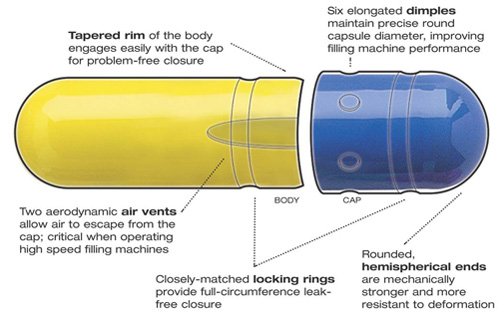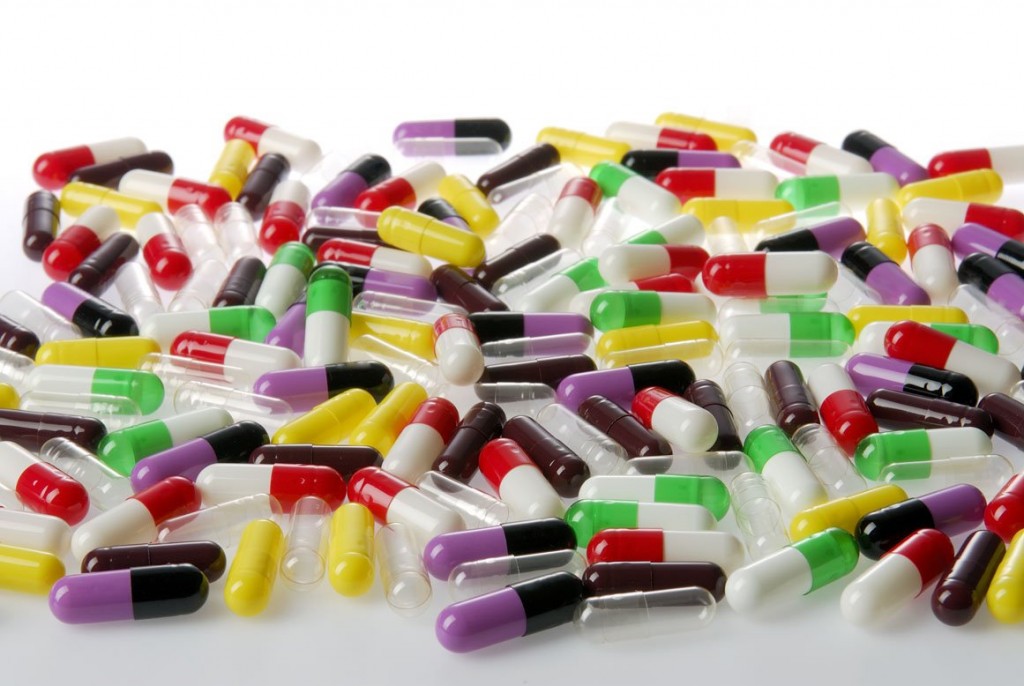PRODUCT
The capsule is one of the oldest dosage forms in pharmaceutical history. A capsule is a shell or a container prepared from gelatin containing one or more medicinal and/or inert substances. Since their inception, capsules have been viewed by consumers as the most efficient method of taking medication.
The majority of capsule products are made of hard gelatin capsules. Hard gelatin capsules are made of two shells: the capsule body and a shorter cap. The cap fits snugly over the open end of the capsule body. The basic hard gelatin capsule shells are made from mixtures of gelatin and water.
HARD GELATIN CAPSULES are widely used because swallowing is very easy, the capsules are elegant, the shells have no taste and the drugs which are not having pleasant taste and smell can be administered also they can be manufactured in different colors.
Raw Material
Main constituent : h.s. grade GELATIN IP.
Gelatin is a product obtained by partial hydrolysis of collagen acquired from the skin, white connective tissue, and bones of animals. Gelatin is a protein which is soluble in warm (or hot) water, but insoluble in cold water. At low temperatures, gelatin dissolved in water becomes a gel (which is insoluble in water). This property is used to prepare capsules. Gelatin capsules become dissolved in warm gastric fluid and release the contents.
Coloured, Transparent and Opaque Capsules
Transparent capsules are prepared from gelatin without adding colours. Colorants are added to the gelatin solution to prepare capsule shells with a variety of colours. It is not unusual to see capsule bodies and caps having different colours.
Opaque capsules are prepared by adding to the gelatin mixture an insoluble substance such as titanium dioxide. Both coloured and opaque capsules make a pharmaceutical product distinctive. By combining the various capsule parts (CAP/BODY) with different colours, distinctive capsules can be prepared. This is important for those who have to take more than one type of drugs in the capsule dosage form. Different drugs in different capsules may be easily distinguished by their colours of the capsules.
WITH THE HELP OF OUR MODERN COLOUR LAB, WE CAN PRODUCE & MATCH ANY SHADE OF COLOUR AS PER CUSTOMER REQUIREMENT.
WE ARE USING ONLY APPROVED COLOURS BY FDcA TO MANUFACTURE OUR CAPSULES.
Capsule Size
Capsule shells are manufactured in various sizes, lengths, diameters, and capacities. For human use, capsules ranging in size from 000 (the largest) to 5 (the smallest) are commercially available. Larger capsules are used in veterinary applications.
CURRENTLY, WE MANUFACTURE #0, #2 AND #3 CAPSULES SHELLS IN OUR PLANT.
pharmacopeial stands of capsules
The European pharmacopoeia describes capsules as ‘solid preparations with hard or soft shells of various shapes & capacities, usually containing a single dose of active ingredient. They are intended for oral administration.” It also includes general description of hard capsules.
A similar general description of capsule is also mentioned in USP 24. It defines capsules as solid dosage forms in which the active ingredient are sealed in a hard or soft contained or shell.
In INDIAN PHARMACOPOEIA 1996, the monograph on HARD GELATIN CAPSULE SHELLS is specified. In INDIAN PHARMACOPOEIA 2007 the description of HARD GELATIN CAPSULES is specified.
WE FOLLOW IP STANDARDS FOR OUR CAPSULES.
STORAGE CONDITION OF CAPSULES
Normally, hard gelatin capsules contain 13–16% of moisture. If additional moisture is absorbed when stored in a high relative humidity environment, hard gelatin capsule shell may lose their rigid shape and become distorted. In an opposite environment of extreme dryness, capsules may become too brittle and may crumble during handling. So, Capsules are to be stored under control conditions of Temperature (15-25°C) & Humidity (45-55 %)
WE STRONGLY RECOMMEND TO STORE OUR CAPSULES IN THE ABOVE MENTIONED CONTROLLED CONDITION ONLY.


